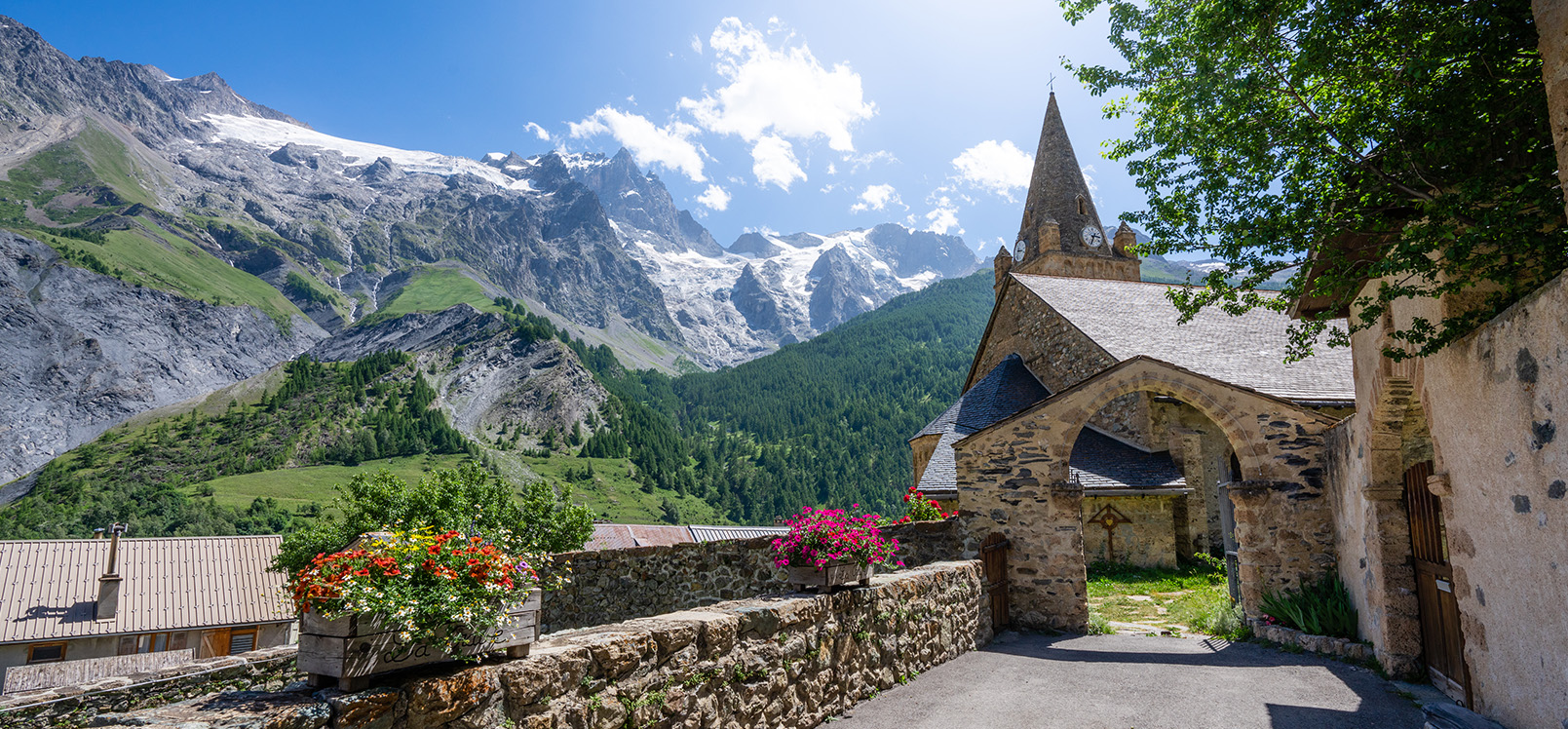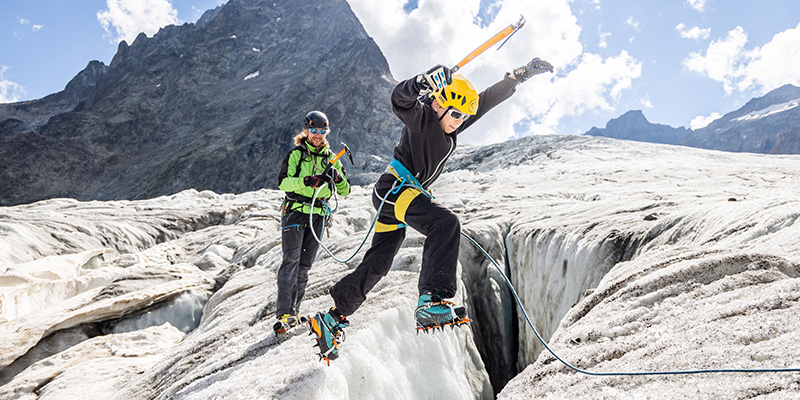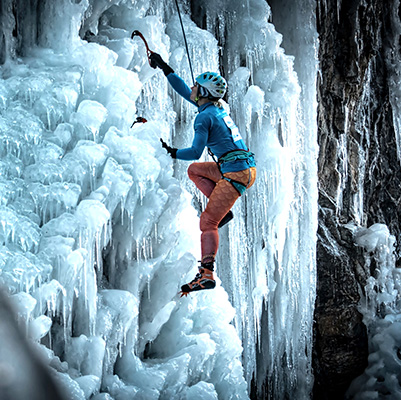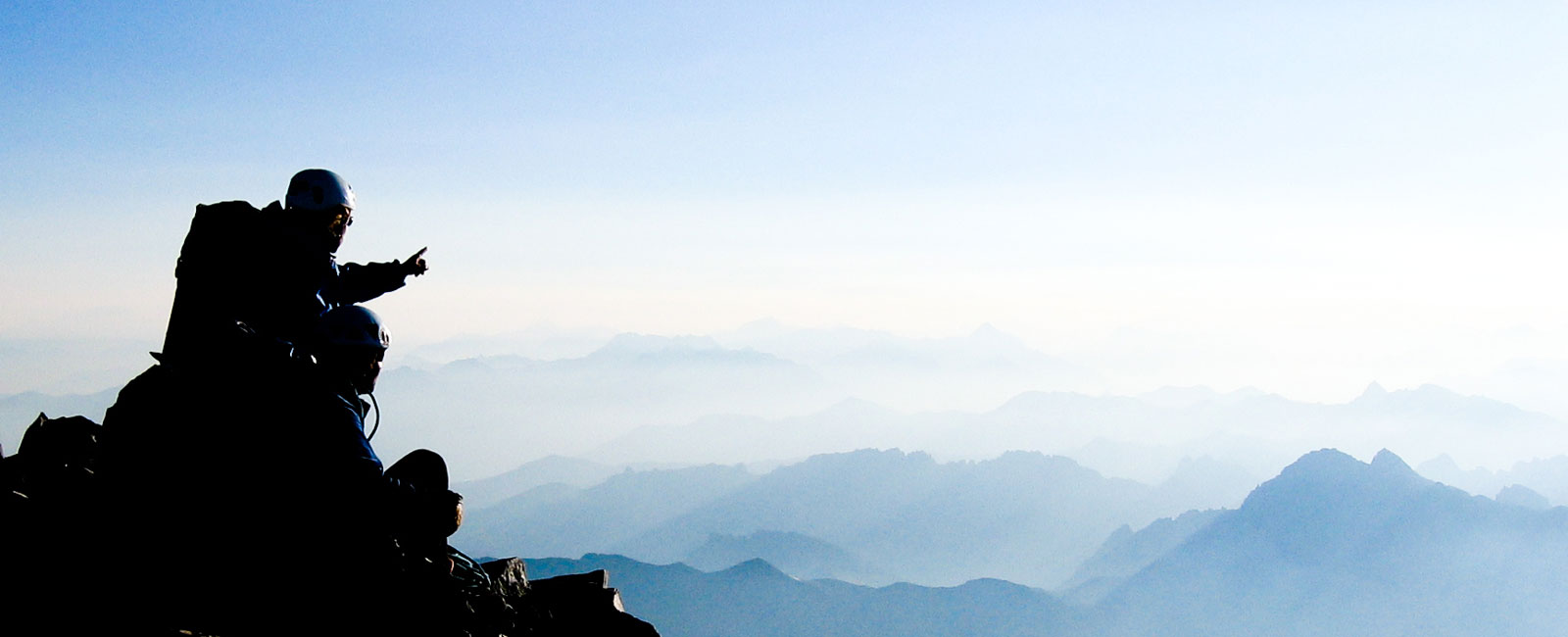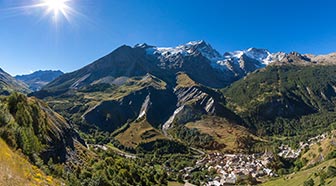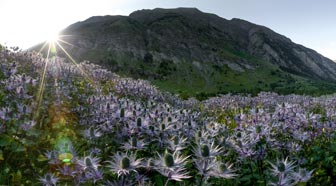OUR MOUNTAINEERING VILLAGES
Seven top mountaineering destinations in the Écrins have joined forces to launch the new ‘Villages d’Alpinisme‘ initiative – five in the Hautes-Alpes département and two in Isère. Their mission is to promote the appeal of the villages here, further the cause of traditional, environmentally friendly mountaineering, pass on the practice to the younger generation and educate the public about the fragile beauty of our natural surroundings. The people who live in these villages are now our ‘Climate Sentinels’, doing their level best to strike the right balance between preserving the beautiful countryside and living their daily lives high up in the Alps.
La Chapelle en Valgaudemar – The most ‘Himalayan’ valley in the Alps
La Chapelle sits beside the River Séveraisse in the heart of the Valgaudemar Valley. This narrow East-West-facing valley is surrounded by precipitous mountainsides and peaks rising to over 3000 metres (L’Olan, Les Bans and Le Sirac) – the closest thing to the Himalayas you’ll find in France. Some of the houses here still sport a distinctive architectural feature unique to this area: a barrel-vaulted porch over the front door known as a toune. Within striking distance of the village, you’ll find a host of hiking trails and mountaineering routes, plus cross-country skiing, traditional hamlets and natural curiosities too.
Vallouise-Pelvoux – A getaway at the foot of the glaciers
The mountaineers’ village of Vallouise-Pelvoux, along with the neighbouring hamlet of Ailefroide, is one of France’s best-loved mountaineering hangouts – second only to Chamonix. Ailefroide, at the foot of Mont Pelvoux, appears untouched by time. This hamlet of traditional stone dwellings is still packed with authentic mountain character. It’s a protected nature area, inhabited only during the summer, and it makes the perfect base camp for mountaineering, climbing and hiking enthusiasts. It is from here that climbers from all over the world set off to summit the highest peaks in the Écrins, the likes of the Barre des Écrins (4102 m), Le Pelvoux (3946 m), L’Ailefroide (3954 m) and Roche Faurio (3730 m), pitting their climbing skills against the bouldering sites and major climbing routes all around.
Le Monêtier-les-Bains and Le Casset hamlet – a superlative climbing destination
Le Monêtier-les-Bains is best known for ‘Les Grands Bains’ spa, its legendary Alpine passes and the ski slopes of Serre-Chevalier. But it is also home to a little mountain hamlet called Le Casset. This tiny settlement on the banks of the River Guisane is the jumping-off point for the Grand and Petit Tabuc valleys, from where you can access one of the highest peaks in the area: the Montagne des Agneaux (3664 m). Also, at Pont de l’Alpe on the climb to the Col du Lautaret, you’ll find the mountain backroad that takes you up to the famous via ferrata on the Aiguillette du Lauzet.
Villar-d’Arène – A village of terraces
Villar-d’Arène and the surrounding hamlets have retained their distinctive heritage. Here, farming and the pastoral lifestyle still hold sway. Wander around and you’ll come across traditional houses, pretty chapels and tinkling fountains. From La Chapelle Saint-Antoine, near the hamlet of Les Cours, there is a gorgeous view of the valley lined by the terraced fields traditionally cultivated here for centuries. The footpaths leading from Pont d’Arsine take you to a number of mountain huts: Chamoissière, L’Alpe de Villar d’Arène, Le Pavé, Adèle Planchard and L’Aigle. A little higher up, at the Col du Lautaret (2058 m), you’ll find the Lautaret Garden and scientific research centre. The botanical garden here boasts more than 2,000 species of alpine plants and flowers from all over the world.
La Grave – Mountaineering on your doorstep
There are very few Alpine valleys where you’re treated to such a magnificent panorama right on your doorstep. From the backstreets that climb steeply to the Church of the Assumption, the vast sweeping view of the surrounding mountains makes you feel insignificant. Here, you are in the shadow of one of the most famous peaks in the Alps: La Meije (3982 m). Its panoramic location at 1500 m altitude and totally unspoilt feel have earned La Grave official recognition as one of ‘Les Plus Beaux Villages de France’. Between the houses, huddled close together on the mountainside, run narrow alleyways known as ‘trabucs’. With the opening of Les Glaciers de la Meije cable car in 1976, La Grave-La Meije became the only ski area of its kind, offering a single off-piste run down the glacier boasting up to 2150 m of vertical drop for experienced skiers, from the top of the mountain right down to the valley bottom.
Saint-Christophe-en-Oisans – Birthplace of the famous mountain guide Gaspard de La Meije
A sought-after mountaineering hub with nine mountain huts and two alpine centres, Saint-Christophe-en-Oisans, along with the hamlet of La Bérarde, is the ultimate climbing destination in the Oisans. This glacial valley with a distinctly wild feel is perfect hiking territory too, packed with natural wonders. The commune of Saint Christophe alone takes up one fifth of the surface area of the Écrins National Park. Towering peaks are all around, with 128 summits over 3000 metres, including La Meije (3982 m), the Barre des Écrins (4102 m), Les Rouies (3589 m) and Les Bans (3669 m). In the heart of the main settlement, known as ‘La Ville’, just a stone’s throw from the cemetery where famous names in mountain guiding were laid to rest, you’ll find the fascinating ‘Mémoires d’Alpinismes’ museum. And the valley bottom runs with the clear waters of the River Vénéon, often a deep turquoise colour, fed by the mountain torrents and waterfalls of the neighbouring side valleys.
Valjouffrey – An unadorned, rural village in unspoilt surroundings
In the commune of Valjouffrey, which sits on the western flank of the Écrins Massif, the weather is influenced by the outer Alps. Between 900 and 1800 metres altitude the area is thickly forested, particularly on the left banks of the Rivers Bonne and Béranger. Carved out by glaciers during the Quaternary Period, the near-vertical sides of the Upper Bonne Valley are flanked by a crowd of summits over 3000 metres, topped by the Pic de l’Olan (3565 m). The proliferation of high mountains all around gives the village a top-of-the-world feel. The valley bottom, the only place where the land is tillable, is lined by a string of hamlets: La Chapelle-en-Valjouffrey, La Chalp, Les Faures and Le Désert, and in the neighbouring Béranger side valley, Valsenestre. ?
